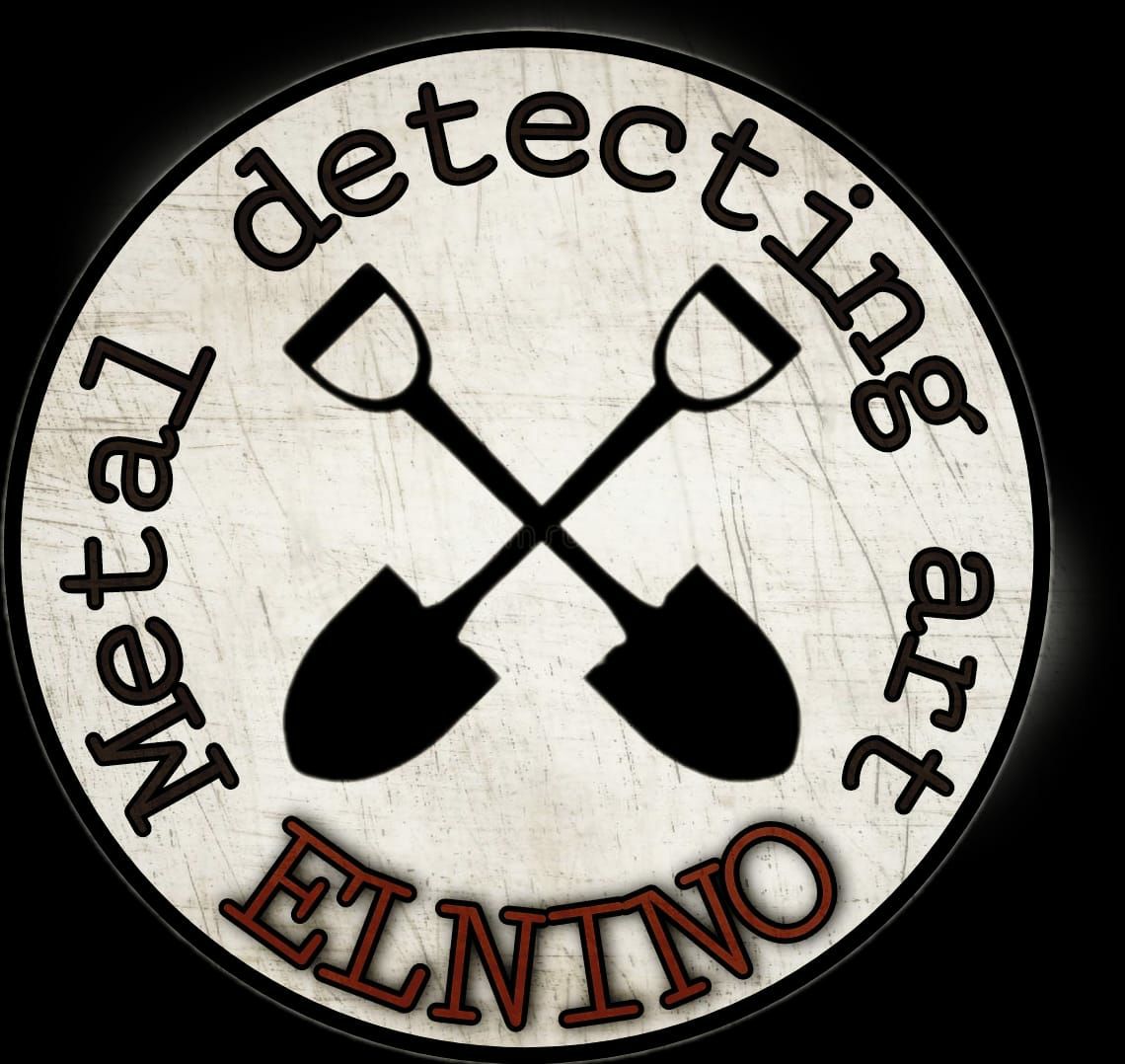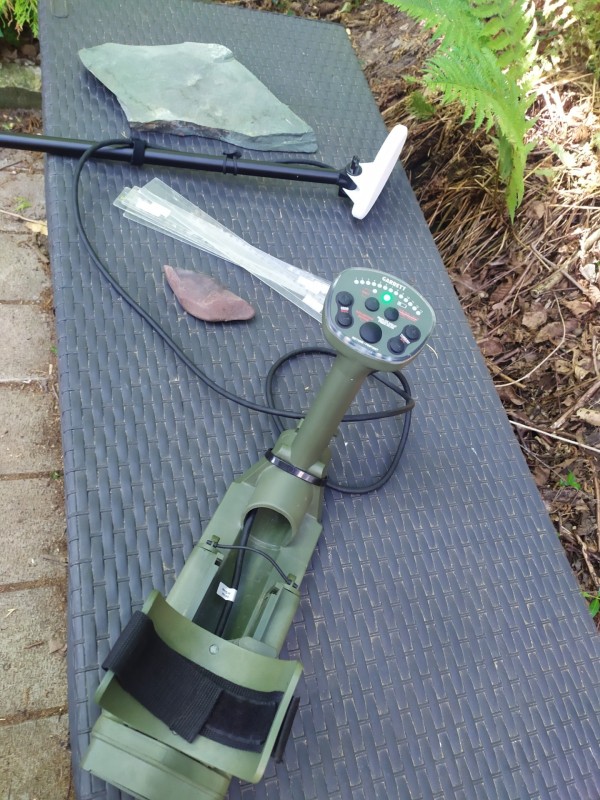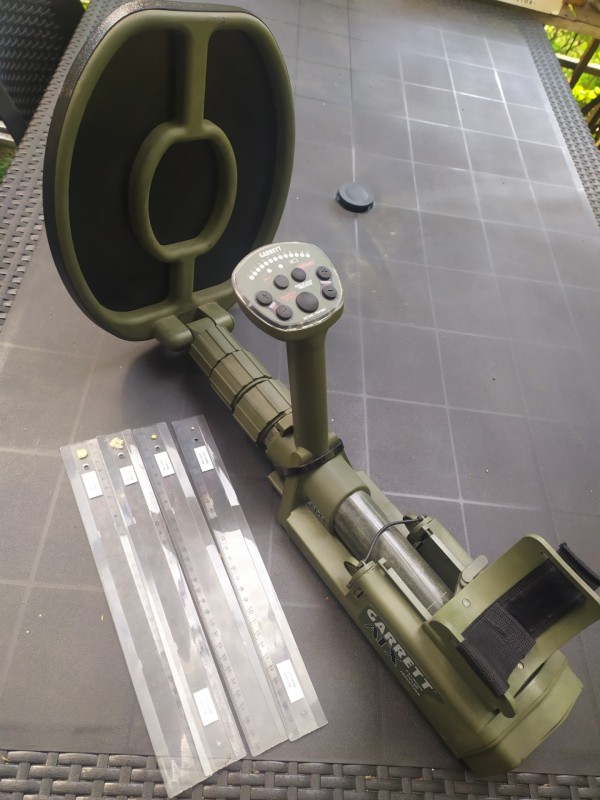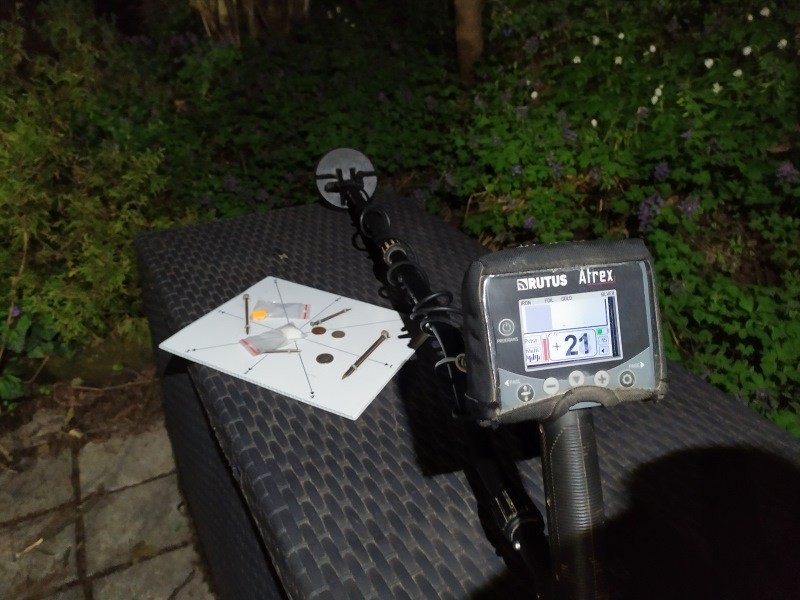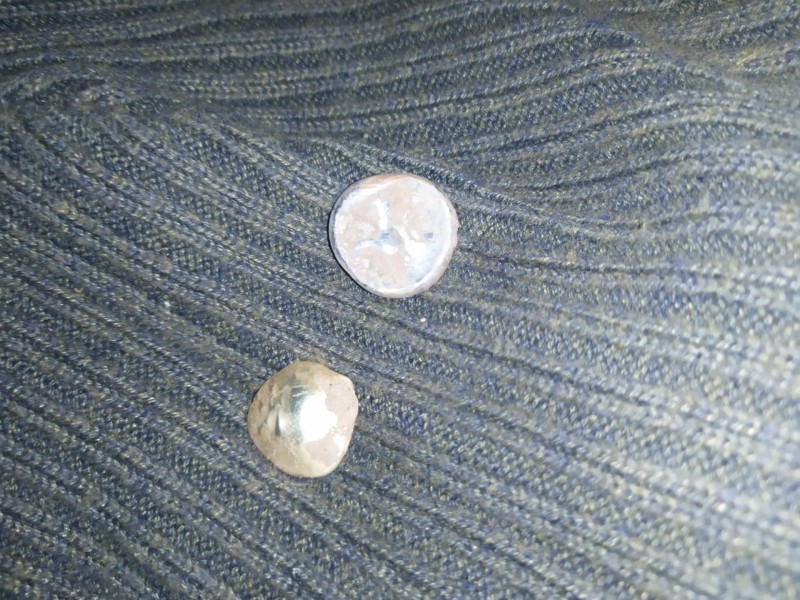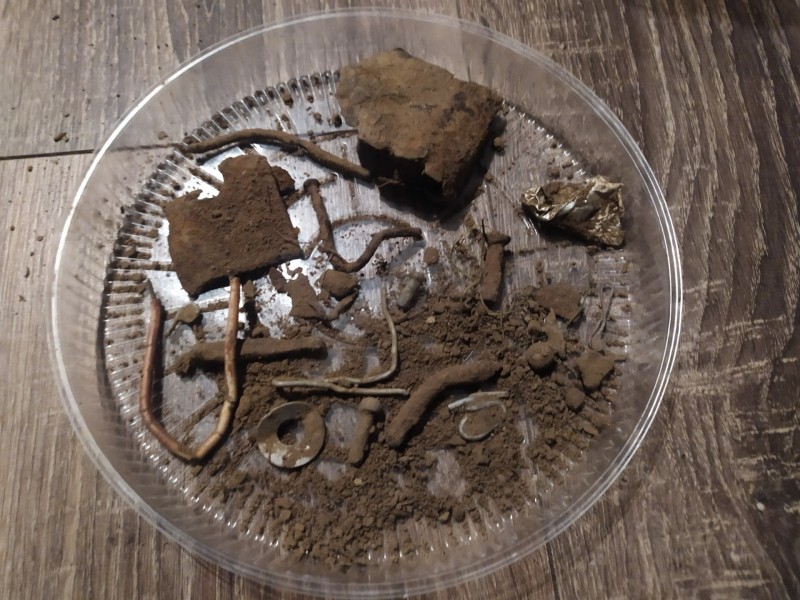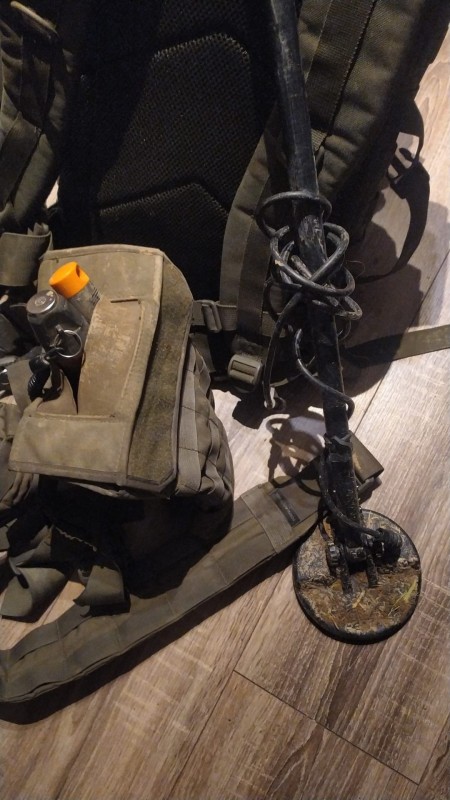-
Posts
1,330 -
Joined
-
Last visited
-
Days Won
1
Content Type
Forums
Detector Prospector Home
Detector Database
Downloads
Everything posted by EL NINO77
-

New Rutus Detector Announced
EL NINO77 replied to xawi29's topic in Metal Detector Advice & Comparisons
Here is another from the test showing the "position"... of the Versa between the detectors.... -

New Rutus Detector Announced
EL NINO77 replied to xawi29's topic in Metal Detector Advice & Comparisons
-

Mixed Feelings On My New To Me ATX (problems Solved)
EL NINO77 replied to Lead Detector's topic in Garrett Metal Detectors
This ATX test is done on a 25KG bag of pure magnetite... you don't have a material that is more mineralized..It's all about learning and practice..... It's all about the correct setting of the PI ATX detector..for the given terrain....and the movement of the coil....and you have to learn that.. -------------------------------------------------------------------------- The second test of my ATX is on buried targets .. in a highly mineralized gold forest / 6-7bar Fe3O4...mineralization ...measured Tek.G2/ Note... the ATX response to the first buried target... a 1 gram gold bar at a depth of 20cm... it's really a reference target...!!! No VLF detector can reach this target in this field yet, except the MXT pro with a 13" ultimate coil.. at optimal settings.../neither Deus 2 nor Manticore yet/ --------------------------------------------------------------------------- Finally, let's see how the PI ATX detector copes ... with 0.1 grams of gold under highly mineralized iron stone ... no VLF detector is caught here ... -
Since the concentric coils for Atrex also work on multi-frequency...so the new concentric coils for VERSA will also work on multi-frequency... Other additional coils for VERSA are being worked on...
-
My experience tells me,,, that the concentric coil begins to have an advantage over the DD coil on a modern and very good separation detector ... only in the case,, when the concentric coil is smaller than the DD coil ... in my experience .... I see the ideal size of a concentric coil between 4.75" and 6".. or up to 7" coil diameter..
-
Let's look at the possibilities of both top Minelab detectors on large coils in comparison to 63 targets... It is also an excellent comparison of CTX and Manticore detection technology...
-
I have a different opinion on it.....just Minelab made a revolution by coming to the market with the Equinox detector, the affordable multi-frequency Equinox 800/600 detector.... If we look at the company Nokta, it also strongly models itself on this minelab Equinox model with its Legend detector... Another real revolution was made again by Minelab.. when it launched the Vanquish 340... a multi-frequency detector for 240 euros... Now to the main thing... and the main target... for every company that manufactures detectors is to make money... and according to that, this is how one company... It must always offer an interesting product for its price...
-
-

First Texas Finally Has A New Website
EL NINO77 replied to phrunt's topic in First Texas - Bounty Hunter, Fisher & Teknetics
I'm glad that Fisher is moving forward nice website...finally..many people are using Fisher/Teknetics detectors until now.. My favorite is the TEK G2... still a good detector... I think that Fisher is preparing new detectors... Relic & Deep-Seeking Detector CZ3D Fisher CZ3D BLÍŽENCI3 Fisher Gemini 3 -

New Rutus Detector Announced
EL NINO77 replied to xawi29's topic in Metal Detector Advice & Comparisons
JCR... detection without discrimination is similar to working on pseudo " All metal" with target recognition using audio tones - ferrous / non-ferrous targets....it's something that Rutus users have been using for a long time...something similar ..as when you use horseshoe with Equinox.. -

New Rutus Detector Announced
EL NINO77 replied to xawi29's topic in Metal Detector Advice & Comparisons
TEST of Rutus VERSA and new NC type software...specifically 2.37 NC/pre-production/ on the demanding Top Digin test field... Imagine for yourself what VERSA can detect on the new NC sofware... -

New Rutus Detector Announced
EL NINO77 replied to xawi29's topic in Metal Detector Advice & Comparisons
JCR....môžete napísať nastavenia VERSA na novom softvéri 2.44 NC, ktorý vám funguje?... Zaujíma ma to z viacerých pohľadov... Inak som rád ... že moje skúsenosti s testovaním VERSA na novom NC software sú potvrdené...,, a zhodujú sa s tým, čo mám tiež od VERSA pri detekcii... už dlhšiu dobu pri testovaní tohto nového NC softvér.. -
I think that Garrett has 2 possible paths in the field of... building coils for a PI detector... first... He can make other different sizes of "DoD" coils, which will be even more optimized for better reach for a certain size of gold..." remember that these coils combine the benefits of the DD coil in mineralization with the reach of targets... as well as they have the same sensitivity as a concentric coil for small targets... 2 Another way is the possibility to go the way with small coils of the classic DD type .. as was the case with the small 3X7" and 5X10" DD coils for the PI Infinium ..
-

New Rutus Detector Announced
EL NINO77 replied to xawi29's topic in Metal Detector Advice & Comparisons
Presentation of the New NC software 2.44 NC .. for the Rutus VERSA detector.. New Software 2.44 NC...presented by the Chief Tester of Rutus detectors ...Artur Troncik .. "SAPER" ...and the designer and also the owner of the company Rutus ...Arkadiusz Rutyna .."RUTUS" -
The use of detectors with a very high frequency of over 30 kHz...also brings the difficulty of setting the detector to a highly mineralized magnetic/magnetite terrain with 4-5% or more percentages of magmetite in the terrain/..because extra high frequencies are much more sensitive to this type of mineralization terrain... Hematite/iron terrain is not so sensitive to high frequencies and there high frequencies can work more stably/ similarly it is also in terrain that contains corroded iron... and there these high frequency detectors achieve good results... 74khz VS 14.4khz ..note the stability of the detector at 14.4khz VS 74khz when I pass the coil around the edge of the black sand container...where there is no target...!!!
-
I don't want to believe that it is Minelab....in my opinion, as an entry level detector, they should have upgraded their entry level detector Go find /120 eur/, or Vanquish 340/230 eur/..
-

Selectable Frequencies Or Smf
EL NINO77 replied to HardPack's topic in Metal Detector Advice & Comparisons
The basic idea of using multi-frequency 1st generation... was primarily about mastering specific terrain conditions, such as salt water, conductive terrain, or specially mineralized terrain. among other things, the multi-frequency of the 1st generation also brought a certain accuracy in displaying the ID... which, however, did not have to be very accurate in highly mineralized terrain... we include here Fisher Cz, Minelaby type Fbs, Whites Spectra V3 and DFX detectors.. That was the main advantage of the multi-frequency of the 1st generation compared to detectors working on 1 frequency... which did not have to work correctly on some difficult terrains...,, Let's also mention a certain disadvantage of multi-frequency detectors of the 1st generation... and that is not a good enough separation in iron... and here in many cases they were better in such separation in iron... fast - 1-frequency detectors... Another significant advantage of 1-frequency detectors /many gold detectors/ also had greater sensitivity and depth to very small targets weighing 0.3 grams and less...compared to multi-frequency detectors of that time... none of the multi-frequency detectors of that time were intended to detect gold as the main detector...on it intended.. The 2nd generation of multi-frequency detectors greatly improved detection and depth on small targets/low visibility targets/ as well as further improved the detection properties and accuracy of VDI targets on various types of terrain... the separation characteristics of detecting targets in iron have also improved very significantly, even to the level of excellent single-frequency detectors There was also a significant improvement in the detection of extremely small targets, and thanks to this, these detectors can also be used very effectively in the detection of natural gold... Here we can include Minelab Equinox, Manticore, Garret Apex Nokta Legend and Rutus Atrex and Versa multi-frequency detectors... ...Multifrequency detectors of the 2nd generation also brought the possibility of using 1 frequency as an alternative option in detection..thanks to what they gained in great universality... -
I think that the situation is a little different in America, and a little different in Europe.... while detectorists in America used almost all American-made detectors for many years... and possibly the Australian manufacturer minelab... detectorists in Europe used a significantly wider selection of detectors not only American and Australian, but to a large extent also European manufacturers of detectors l..which really have very good noise-separation detection parameters./detection efficiency/..but they were also competitive in price.. in order to appreciate these detectors, you have to use them or see them in the field where you are detecting... After all, Minelab was the first to understand this and came up with the very competitive Minelab Equinox 600/800 multi-frequency detectors.. which was also available at a reasonable price... equinox also brought one new thing... accurate very deep ID on targets in many types of terrain. .. It was a direct response primarily to the European manufacturer XP.. with their Deus/ORX model.. This eventually forced the XP company to enter the market with the Deus 2 multi-frequency detector. I would like to mention Turkey Nokta, which was largely inspired by the Equinox 800 model and produced a very similar detector. Other European manufacturers such as Rutus, Golden Mask are also not sleeping and are innovating their detectors... and don't forget the Russian company AKA model INTRONIK.. which is a powerful detector.. I myself took part as a tester in testing the first multi-frequency detector from the company Rutus.. model ATREX .. and, now I am one of the testers of the multi-frequency and Rutus VERSA, which fulfills the attributes of a compact, waterproof and powerful metal detector... which I think will surprise you with its performance. .even on mineralized terrains.. This makes us think...that the future of detection technology is open and it is worth making innovations in detection technology. for every detector manufacturer... ...something from the main part of my detectors, American, European and Australian detectors...
-
Dave... the 12cm concentric coil on the ATREX ..it is not a problem to work in multi-frequency,,, on the contrary, it does not lose its separation possibilities... which I use and have good results with it.. and the great value of this small 12cm concentric coil from provides the best 2D separation of all coils to ATREX...
-
...Steve is right about something... a lot of .. "like .. testers" ... start testing a new detector... and at the same time they have not yet understood well how the detector works... and a detector tested in this way may or may not give good results in such testing .. or on the contrary, the given new detector provides excellent results in such a test ... but it does not work in another type of test ... and it also does not work in the field where you are detecting ... because it is important for detection not only how the detector signals the target... but also if the detector signals iron .. or other waste... and the terrain itself also strongly influences such detection.. I'm talking about the ratio of good signals ... to waste, for example... And on the other side there are "Field testers" of the detector manufacturer who test the detectors from the prototype.. and you can really trust them.. because in such testing.. they know what they are doing... and they try to improve the tested detector as much as possible.. from my point of view, one of the best possibilities for testing the properties of the detector is various test fields... which contain both deep-seated targets and iron-masked targets... and which also contain civilized pollution with rusts, ceramics, coal and ash... because they really simulate the real detection conditions.. If there are more of these test fields... then you can really evaluate quite accurately how the detector works... Minelab Manticore field tester... Mike on his test field... Finally, the work of field testers directly in detection in the field...can further evaluate the test properties of the new detector in detection First of all, I want to say... well done synthetically... specific separation tests should show which detector setting will be best done in a given detection situation... But here it can be shown that a certain detector or even the type of coil used do not really have the best detection results in which type of separation... or it can be the opposite... it can show the correct combination of detector and coil + correct setting... I can provide the best separation results.. in the test.. one more thing... the given detection situation should have really well simulated real detection conditions in a certain terrain... and then such testing can provide excellent results in practical detection as well Now something about the Monte performance nailboard test.... this separation test simulates really well the 2D separation of a good target in iron - the so-called shallow separation. - because this type can separate targets well, let's say to a depth of 8-10 cm.max In ...Monte's 2D separation test, find out really well which coil or detector program setting can give you the best results in the given "2D separation" test.. I fully trust this test...and I have very good experience with it in detection...where a good detector with an optimal coil for 2D separation...can comfortably unmask the last ... good shallow targets between iron.... The 12 cm concentric coil on this detector provides the best separation results in the Monte performance nailboard test. at the optimal setting. on 1 frequency but also in multi-frequency... the detector on such a setting .. was able to detect and pull out in iron .. 2 really good targets ... both signals gave correct VDI and signal graph of the target in the cross signal control.. in multyfrequency program ... the number of unsolicited waste... to detect 2 good targets... for me it is an important parameter in detection... in 3.5 hours detection The optimal coil on the detector ..really delivered... excellent results in the Monte Performance Nailboard Test separation test...but it also managed to find another 2 good targets in 3.5 hours of detection... !!! Finally, I want to say that if you need to search for deeply buried targets... you will need a detector and a coil that can pass the 3D deep separation test... /10-30 cm deph / and that is quite different testing compared to the Monte Performance Separation test... 3D depth separation test - a small 16.5mm nickel coin in a depth of 11 cm...
-

New Rutus Detector Announced
EL NINO77 replied to xawi29's topic in Metal Detector Advice & Comparisons
Dave .... I think that after the new software for VERSA, there will be new software for ATREX -

New Rutus Detector Announced
EL NINO77 replied to xawi29's topic in Metal Detector Advice & Comparisons
I think I can say that, the new software for VERSA will have an adjustable audio gain and many other significant improvements...some of the features of the new software/which is in tests/surprised me. -

New Rutus Detector Announced
EL NINO77 replied to xawi29's topic in Metal Detector Advice & Comparisons
I AM curious about your experience with Rutus VERSA... ,,and if you have any questions about the setup, I will be happy to advise them... New settings and improvements are coming to VERSA...so I will be interested in the work of VERSA on American soil...👍

